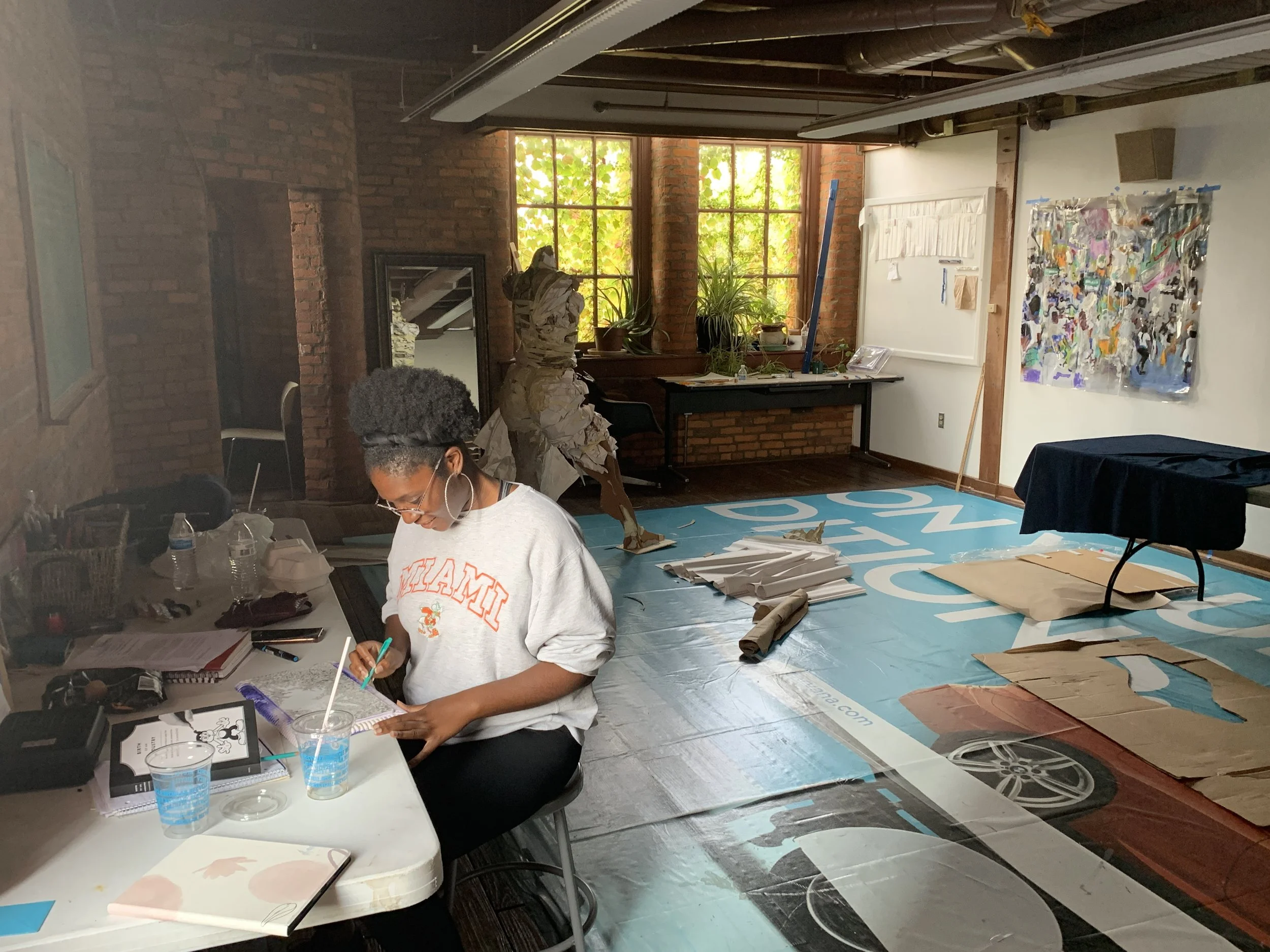Creativity Behind Representation: Artists Reveal Their Inspiration Behind the Works on Display in the “Black Joy” Exhibit
Artist Afua Dankwah-Boakye’s ceramic sculptures "Noemie” (left) and “Vous Deux” in a display case at Thompson library.
Credit: Amani Bayo
By Amani Bayo
Columbus artists explore the beauty and Black narratives through various forms of art within the Frank W. Hale Jr. Black Cultural Center’s “Black Joy” exhibit.
The Black Joy exhibit selected artwork with a central theme of exploring and celebrating the beauty of pan-Africanism, a movement meant to strengthen solidarity between indigenous peoples and the African diaspora, and to uplift the Black community, according to the Office of Diversity and Inclusion.
Twelve artists are featured in the exhibit, their work was chosen based on the central theme of uplifting the Black community. According to ODI, the intention is to bring Black local artists and Ohio State together in one space; the exhibit can be found in the Thompson Library Special Collections gallery and on the first floor of Hale Hall until February 28.
Acrylic paintings and ceramic sculptures are nothing short of creative outlets for fourth-year health science major, Afua Dankwah-Boakye. Her work seeks to explore Black female beauty in a way that is often unrepresented.
“For me personally, it's just to broadcast beauty,” Boakye said. “I feel like a lot of Black girls struggle with finding beauty in themselves.”
Among several of the artists featured in the exhibit, Boakye said she explores Black femininity and beauty through the lens of her own upbringing.
Born and raised in Ghana, Boakye moved to the United States when she was eight-years-old. During the transition, she said she experienced difficulty identifying with her new peers.
“That was kind of a struggle,” Boakye said. “The whole experience was a culture shock.”
Boakye said she has reminded herself of the beauty in her identity by surrounding herself with her community and discovering acceptance with who she is.
Boakye’s art features both a ceramic figure and painting of Black women covered in gold. She said this significance comes from her cultural roots.
“The history behind Ghana, it's one of the countries where our main resource was gold,” Boakye said. “It also has to do with Black beauty being priceless.”
Despite being hesitant to put her work on display, Boakye said it was important to shine a different light on Black women’s beauty.
“A Black woman's body is always sexualized,” Boakye said. “Let's put it on a pedestal and admire and [have] it looked at as a form of art.”
While Boakye focused on the beauty within Black Joy and the representation, local artists like Annie Chrissy Burley took a dive into what Black Joy could truly mean for her.
Burley, local visual artist and current resident at the Culture Arts Center, said before she displayed her work, she explored what Black joy meant and whether her piece relayed that meaning.
“People are satisfied with happiness, but that is fleeting,” Burley said. “To get joy is actually to sacrifice or to actually labor.”
Annie Burley creating in her studio at the Columbus Cultural Arts Center
Credit: Amani Bayo
Burley said her art in the exhibit, which is based on the Michelangelo “The Creation of Adam” painting, is a reflection of how Black women are often an alienated necessity for the world.
“Representation of Black women has been, ‘Y’all are laboring for the world,’” Burley said. “In the piece it's like all these different people trying to come for the dead Black women; like having Black women representation is a card of morality.”
Burley highlighted the joy that can come out of Blackness despite the sufferings of Black women and the Black community in general. This aligns with ODI’s goal to bring a light to the Black community in the wake of Black Lives Matter protests in recent years, according to ODI.
Boakye said she hopes her art will inspire Black students to search for the meaning of Black Joy within their own narratives.
“Trust in your process,” Boakye said. “Learn to love yourself in what you represent.”

